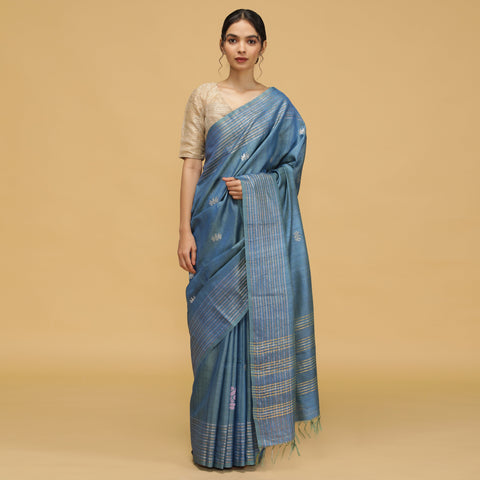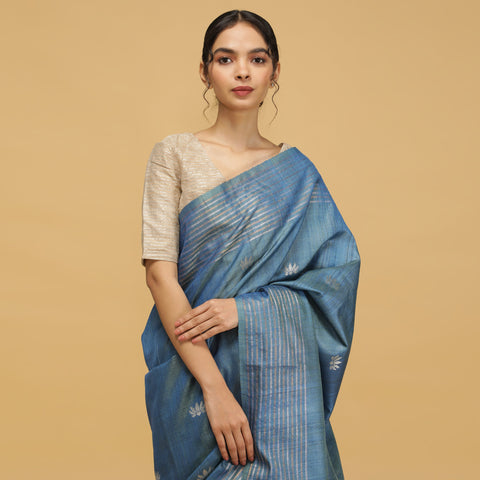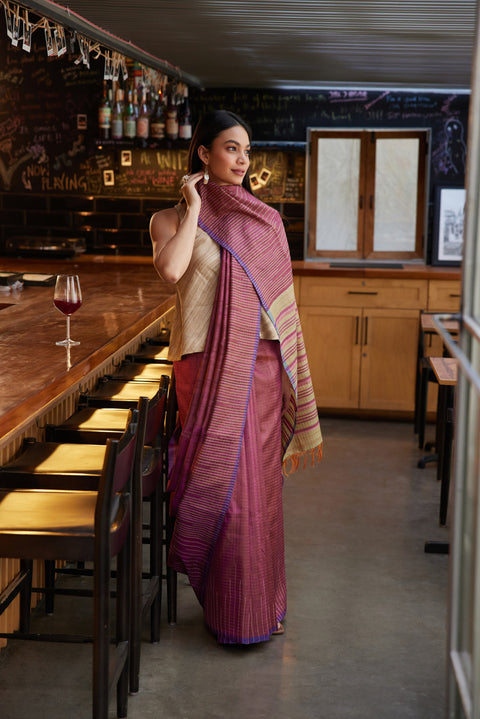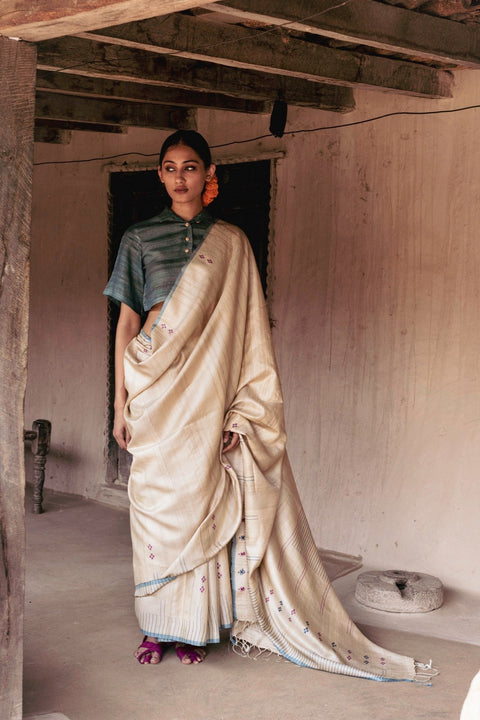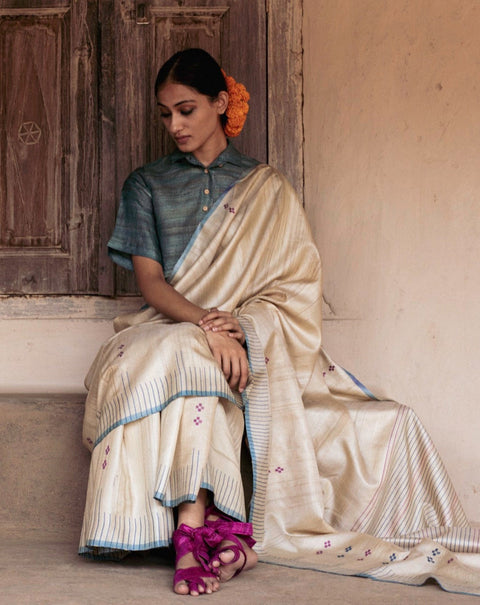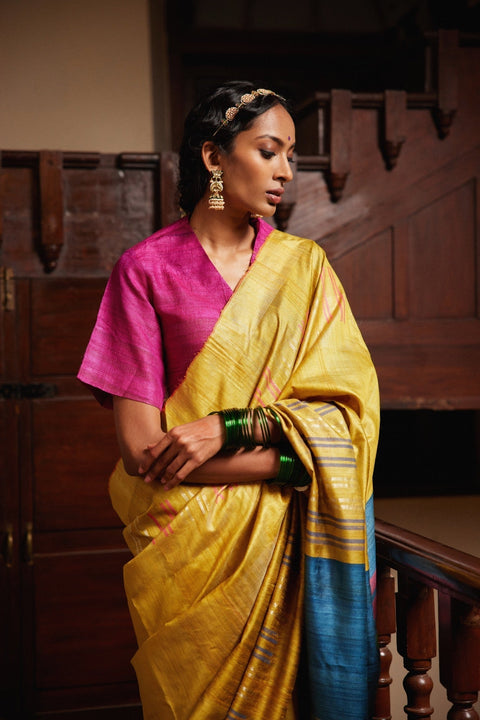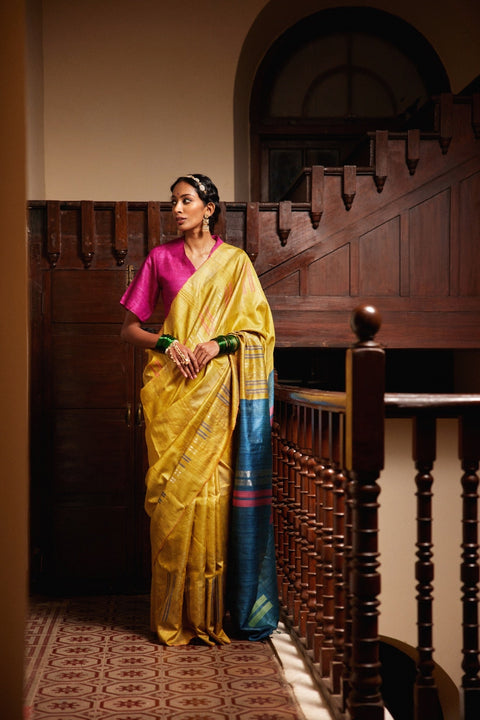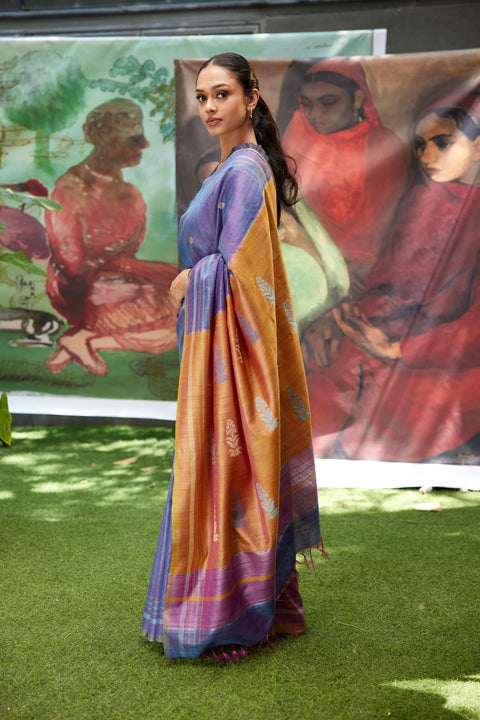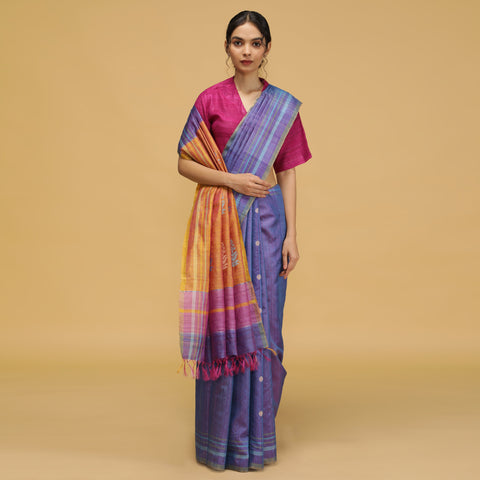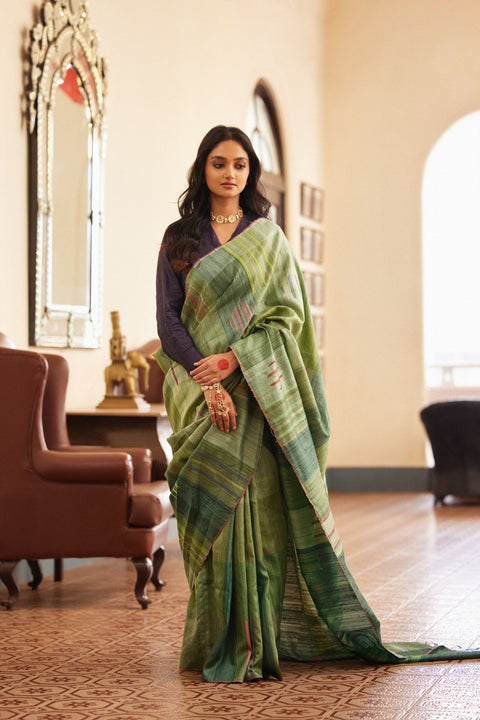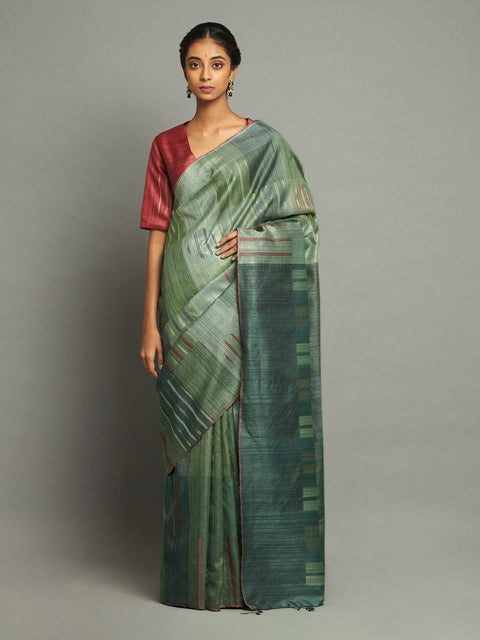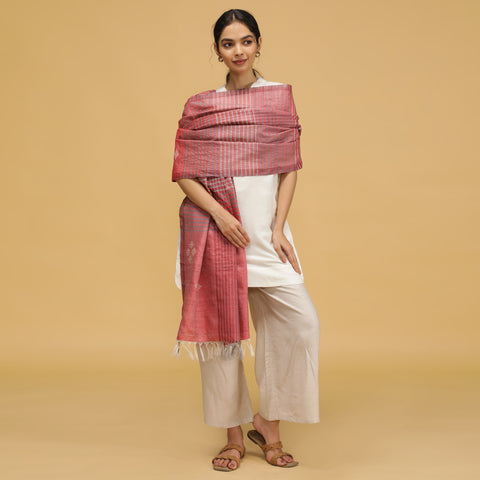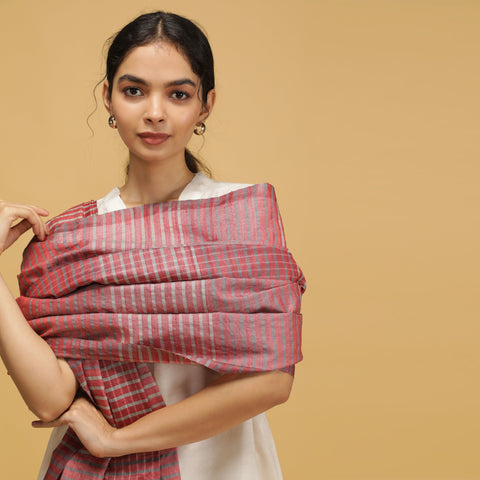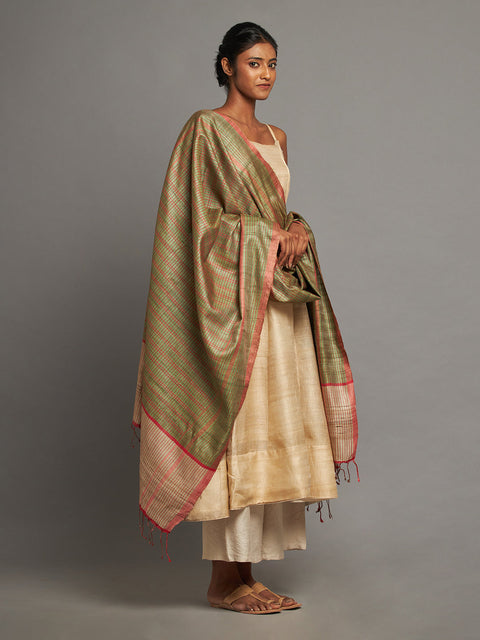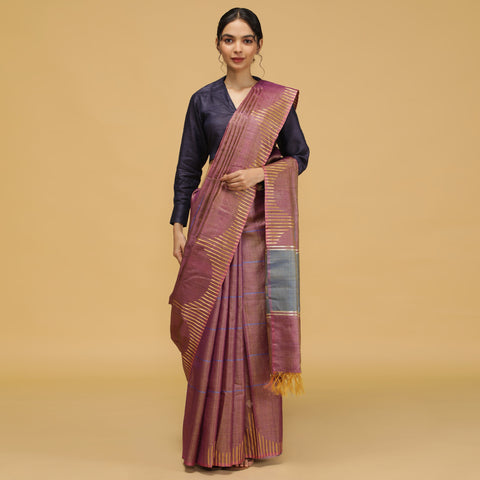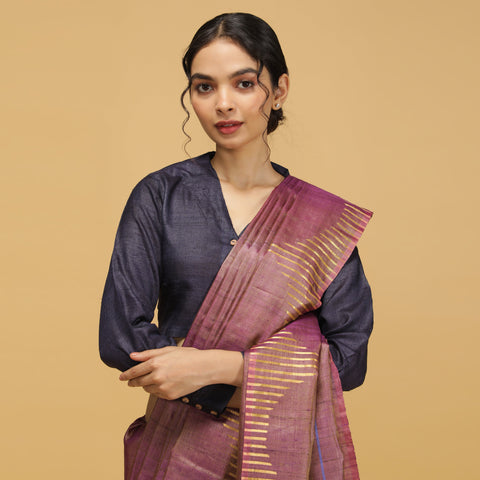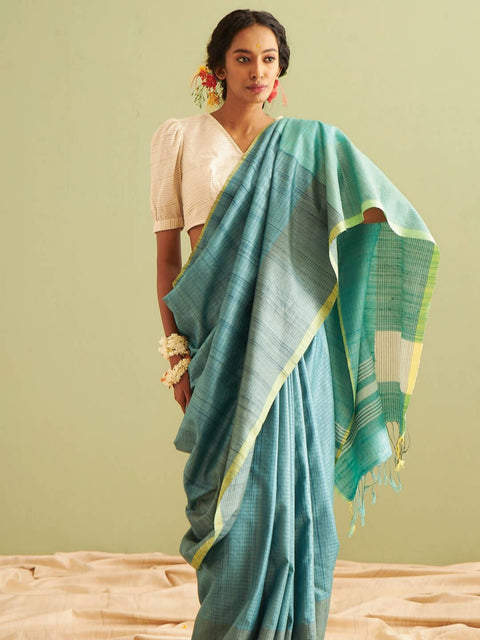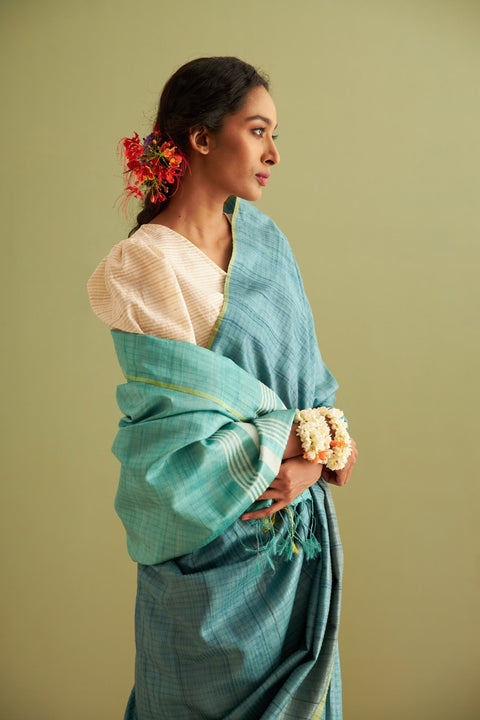
Table of Contents
Silk lovers, it’s time to turn your attention to one of the most exquisite and eco-friendly silks of India - Kosa silk. If you’ve ever been captivated by the rich texture and earthy hues of traditional Indian silks, this is one fabric you must know about. But what is Kosa silk exactly? Why is it special? And, most importantly, why should you choose it over other varieties?
Let’s unravel the story of Kosa silk, its fascinating history, and how you can spot an authentic piece for your wardrobe.
What is special about Kosa silk?
What is Kosa silk, and why do silk enthusiasts swear by it? It is a fabric that balances elegance and comfort, making it a must-have for those who appreciate fine craftsmanship. Kosa silk isn’t just another variety of silk - it’s a fabric that blends luxury with sustainability. Unlike regular mulberry silk, which has a shiny, smooth texture, Kosa silk has a slightly coarse yet soft feel, making it highly durable. Its unique texture allows it to hold natural dyes beautifully, resulting in earthy shades like golden, honey, and tawny brown.
What truly sets Kosa silk apart is its breathability and adaptability. It’s perfect for both warm and cool weather, making it a year-round favourite for silk enthusiasts. For those who appreciate classic weaves with a luxurious feel, a green colour silk saree in Kosa combines timeless elegance with long-lasting durability. Whether it’s a grand wedding outfit or elegant Kosa silk sarees for office wear, this silk can seamlessly fit into various occasions. From workwear to a party wear silk saree, Kosa adapts beautifully to every setting, making it a versatile staple in every wardrobe.
What is the history of Kosa silk?
The legacy of Kosa silk dates back centuries, deeply rooted in the culture of Chhattisgarh, India. It has been an integral part of the local weaving industry, with generations of artisans perfecting their craft to produce some of the most stunning Kosa sarees.
In ancient times, Kosa silk was considered a prized possession, often worn by royalty and aristocrats. Its cultural significance is still evident today, as it continues to be a preferred choice for traditional ceremonies and festivals. The weaving techniques have been passed down through generations, ensuring that the authenticity of this silk remains intact.
How is Kosa silk made?
The making of Kosa silk is an eco-friendly process. It all begins with the cocoons of the Antheraea mylitta silkworm, which thrives in the wild forests of Chhattisgarh and Madhya Pradesh. Unlike conventional silk production, where silkworms are bred in captivity, Kosa silk is derived from wild silkworms, making it a more sustainable option.
The production process involves several stages:
-
Harvesting the Cocoons – The silkworms spin their cocoons in trees, and once the moths leave, the cocoons are collected.
-
Degumming and Processing – The raw silk is then carefully degummed to remove the outer layers, making it softer and more suitable for weaving.
-
Dyeing and Weaving – The silk is dyed using natural ingredients like pomegranate rinds, iron, and lac, preserving its eco-friendly nature. Skilled artisans then weave the fabric using traditional looms, ensuring every piece is unique and handwoven.
Is Tussar and Kosa silk the same?
This is a common question among silk enthusiasts. While Kosa silk and Tussar silk come from the same family of wild silks, they are not identical. Plain tussar silk sarees are a broader category of wild silk, whereas Kosa silk is a specific variety found mainly in India.
The key difference lies in their texture and processing. Kosa silk is considered superior in strength and durability, making it a preferred choice for luxury wear. Additionally, it has a distinctive natural golden sheen, which gives it an elegant and rich appearance.
How to identify Kosa silk saree?
With the growing demand for silk, counterfeit fabrics are also on the rise. So, if you’re asking yourself, what is Kosa silk and how can you tell if you’ve got the real deal, here are some essential tips to help you distinguish authentic Kosa silk from imitations.
-
Look for the Texture – A pure Kosa silk saree has a slightly coarse texture compared to mulberry silk but becomes softer with each wash.
-
Check the Colour Variations – Natural Kosa silk is never overly bright; it carries rich earthy tones. If a saree appears unnaturally shiny, it’s likely a synthetic blend.
-
Burn Test – If you take a small thread and burn it, real Kosa silk will leave a powdery ash, while synthetic silk will melt into a plastic-like residue.
-
Weave Pattern – Authentic handloom silk sarees will have minor irregularities in their weave, as they are handcrafted. A machine-made saree will have a perfectly uniform pattern.
Where is Kosa silk found in India?
People who search for what is Kosa silk often wonder where it originates. The heart of Kosa silk production lies in Chhattisgarh, particularly in the regions of Korba, Bilaspur, and Raigarh. These areas are home to skilled artisans who have been weaving Kosa silk for generations. The forests of Chhattisgarh provide the ideal environment for the Antheraea mylitta silkworms to thrive, making this state the hub of authentic Kosa silk.
While Chhattisgarh is the primary producer, Kosa silk is also found in parts of Madhya Pradesh and Maharashtra, where similar wild silkworm species are cultivated. But, in case you're wondering about which city is famous for the Kosa weaving industry particularly, the answer is Champa. Situated in Chhattisgarh, this city is the heart of Kosa silk weaving, known for producing some of the most exquisite sarees and fabrics.
Takeaway
In an era where sustainable fashion is gaining importance, Kosa silk stands out as an eco-friendly and ethical choice. Be it a Kosa saree for the work place or for festive gatherings, this fabric is a timeless investment. It embodies tradition, luxury, and sustainability, making it the perfect addition to any silk lover’s collection.
So, the next time you shop for silk, ask yourself - what is Kosa silk, and why settle for anything less than this natural treasure?



